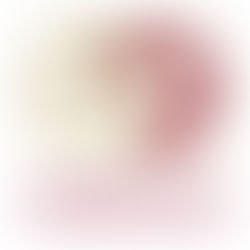Large Figure: Middle-East meets South-West
Having consulted with Valentine's Clay what their best white stoneware clay for hand building is I went for their ES40 clay.
As with the previous black and red large figures I started with a drawn outline on paper onto which I would coil one half of the figure.


Once the first half is completed I let it firm up a bit before turning over - well supported by foam and pads of bubble wrap. I also make sure that I really compress and smooth out all the coils internally in order to avoid any cracks later on. While coiling the top half I decided that I wanted to cinch in its waist as it was getting to wide. Thus I tied a bit of plastic around its middle as a support.


As these figures need so much padding to support them I can only see the overall shape quite late on in the making process, only once it has firmed up enough to have most of its support removed. Next I use a scraper to refine its shape, take out any lumps and bumps and work on the flow of lines (left). Once that is done I will burnish the piece to press any grog below the surface for a smooth finish (right). I have used a metal spoon to do so but it seems to be leaving dark marks. I hope these will burn out.


Hm, these marks are still visible after bisque firing. I think I will have to find a different burning tool for next time.


On seeing this previous marquette Dave gave me the challenge over the Christmas break to cover one of my large figures with the same small detailed decoration as that marquette. Well, there are some challenges one just has to rise to and this one of them. Actually, it turned more into a new year's resolution as I started the decorating on the 1st January.

I started with mapping out the white unglazed areas that would wrap around the figure. It was important to get these right as they not only break up the planes into areas but also help lead the eye around the piece. This took much longer than I thought it would as I needed to constantly move and rotate the piece around to see whether it would work when viewed from all sort of different angles.
Once that was done I used the design liner to draw the black outlines and fill the fields with a blue/grey wash of underglaze.

I decided that I wanted to combine Iznik inspired patterns with patterns from Pueblo Indians. Each pattern would sit within a field bordered by the white boundary lines, thus keeping each pattern family separated from the other.

Quite early on it became apparent that the white boundary bands were too dominant. So, I made them narrower.

That wasn't quite good enough. Thus I decided have the pattern overlap the white borders. This wouldn't only work aesthetically but also within the the concept of linking the pattern families to indicate cross cultural links.

I noticed quite early on that I couldn't work on both pattern families parallel. I decided first to do all of the Iznik inspired patterns before moving on the the Pueblo pattern. As I was not copying the original patterns slavishly but doing my own interpretation I was aware I that I had to make sure not to loose their cultural identifying characteristics. This would probably been the case if I had worked on the two pattern families parallel.
I also changed their colour palette and reduced the number of colours down to black, dark and medium blue. I chose these colours mainly because I like them but also because they, to me, are relatively close to each other and harmonise.
This photo may do the complexity and density of the pattern justice. I worked on the decoration for fourteen consecutive days and approximately eighty hours.

The next step was to fire on the underglazes to help them stick to the clay body before I do any glazing. I do not want to risk having a glaze application problem where I have to wash off the glaze and it removes the underglazes. They need to be fixed before.

Out of the kiln the colours look lovely and crisp with a pleasing matt finish on the white clay body. I know this will change quite a bit once it gets fired with a clear glaze. The colours will change (both underglaze colours and also the clay body colour) and it will have a shiny finish.

In preparation to the glaze application I will carefully paint all the white banding lines with wax resist. I want these to remain matt and unglazed. This is not only an aesthetic decision but the lines broaden towards the ends of the limbs. That means that the three areas where the figure sits on the kiln shelf during firing have not glaze. This has been taken into account at the very beginning of the decorating stage when I first mapped out the lines with pencil.

We'll see what next week will bring when I glaze and glaze fire this one. May all the kiln gods - large and small - be with me!

















